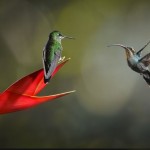National Park Golfito Wildlife
Juan Castro Blanco National Park
Located in the province of Alajuela, east of Ciudad Quesada, is the Juan Castro Blanco National Park.
Surrounded by water districts Zarcas, Venice, Zapote, Laguna, Tapezco, Palmyra, SarchíNorte, Yellow Toro and Rio Cuarto, among others. It has an area of 14.258 hectares.
It was created mendiante Act No. 7297 of April 22, 1992.
This desert of protected areas with water resucrsos of great importance to the north, tnto for human consumption, hydroelectric power generation and industrial consumption ael pair.
Here the rivers Platanar, Toro, Aguas Zarcas, Three Friends and La Vieja et al. Protect areas of primary forest in five important areas of life of the species of flora and fauna.
Within this national park importnates geomorphological features such as boilers, active volcanic foci (Volcano Platanar), inactive volcanic foci (Cerro Viejo and Cerro Pelon).
In addition, Quaternary volcanic cones, alluvial fans and alluvial sedimentation forms.
The vegetation of the area is very diverse in the Juan Castro Blanco National Park. Approximately 60% of the park is covered by primary forest mixed with patches of forest regeneration.
These forests are presented in five life zones according to Holdridge classification: transition to premontane forest perhumid, lower montane wet forest transition, rain, very humid forest tansición to rain, rain, montane forest and montane rain forest .
Featured Species are oak and Quizarrá. At the top is covered with a wash of many epiphytic plants, microclimates characteristic of cold, windy and wet.
Within Excel wildlife species like the quetzal, the peacock, the kettle black, the chachalaca, mammals such as ibex, two species of monkeys, armadillo, tepescuinte, tapir, and several species of cats..
Jaco Beach Costa Rica, Enjoy the Central Pasific Site, this region offers many of the best activities found in Costa Rica, from our Relaxing Massages to Extreme adventure tours.

